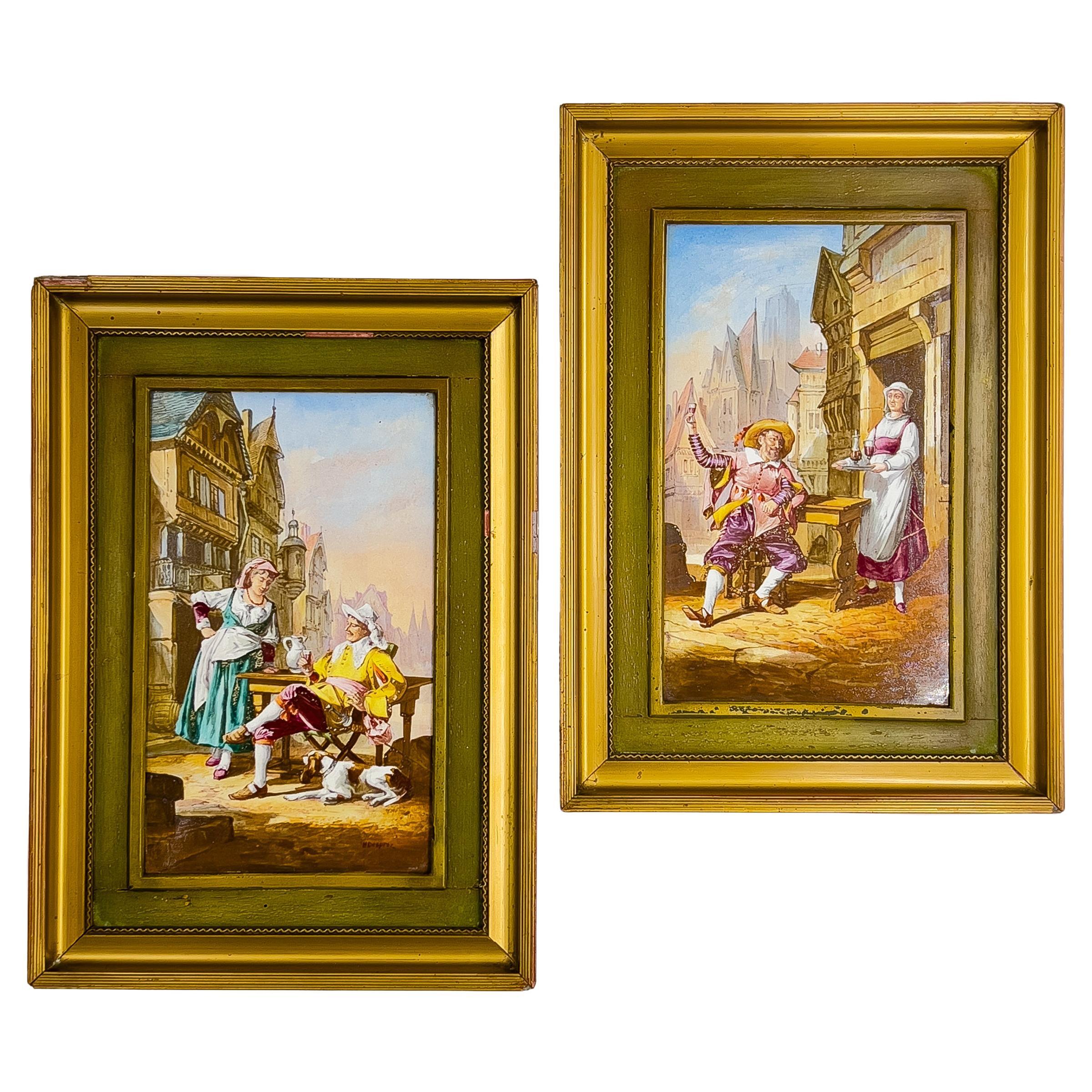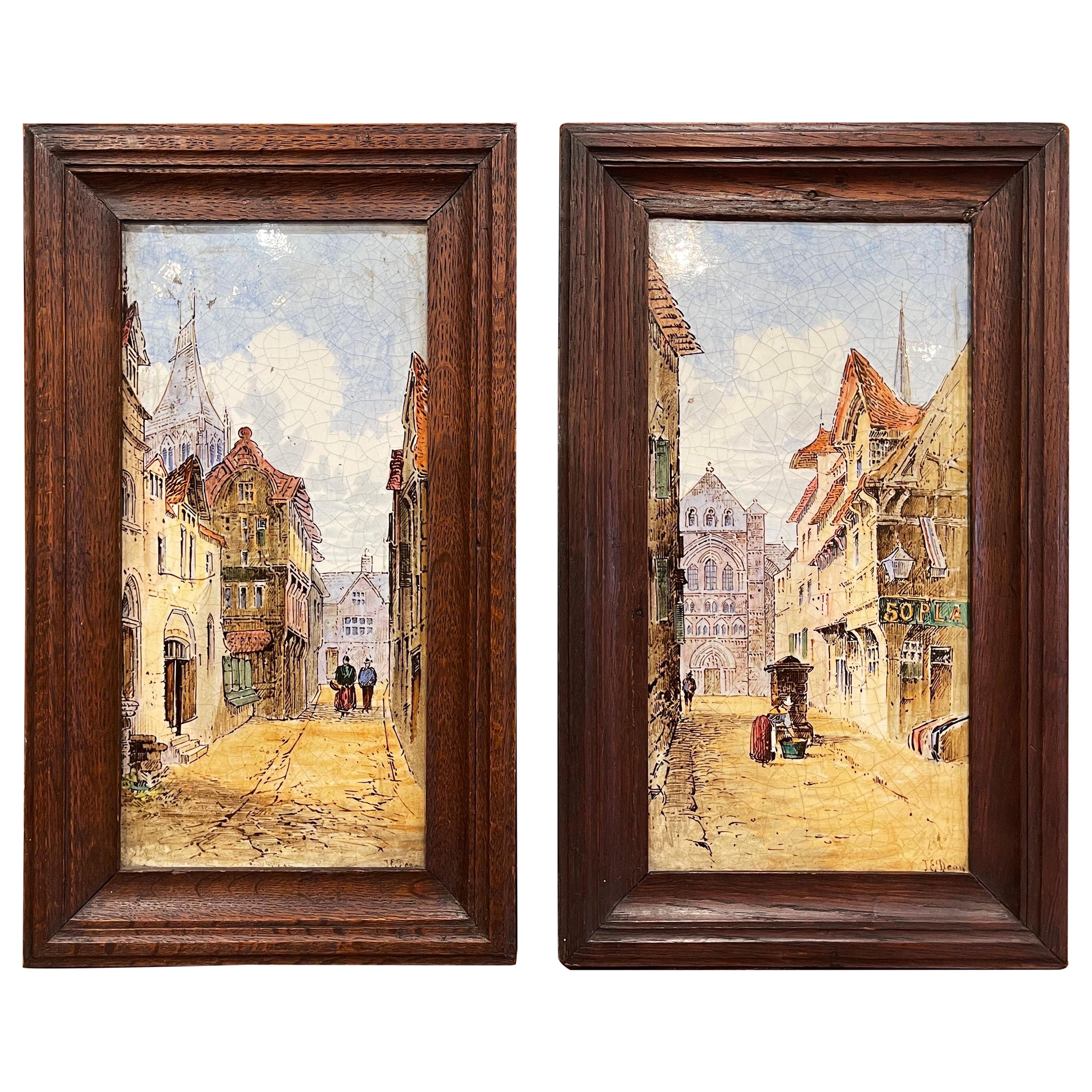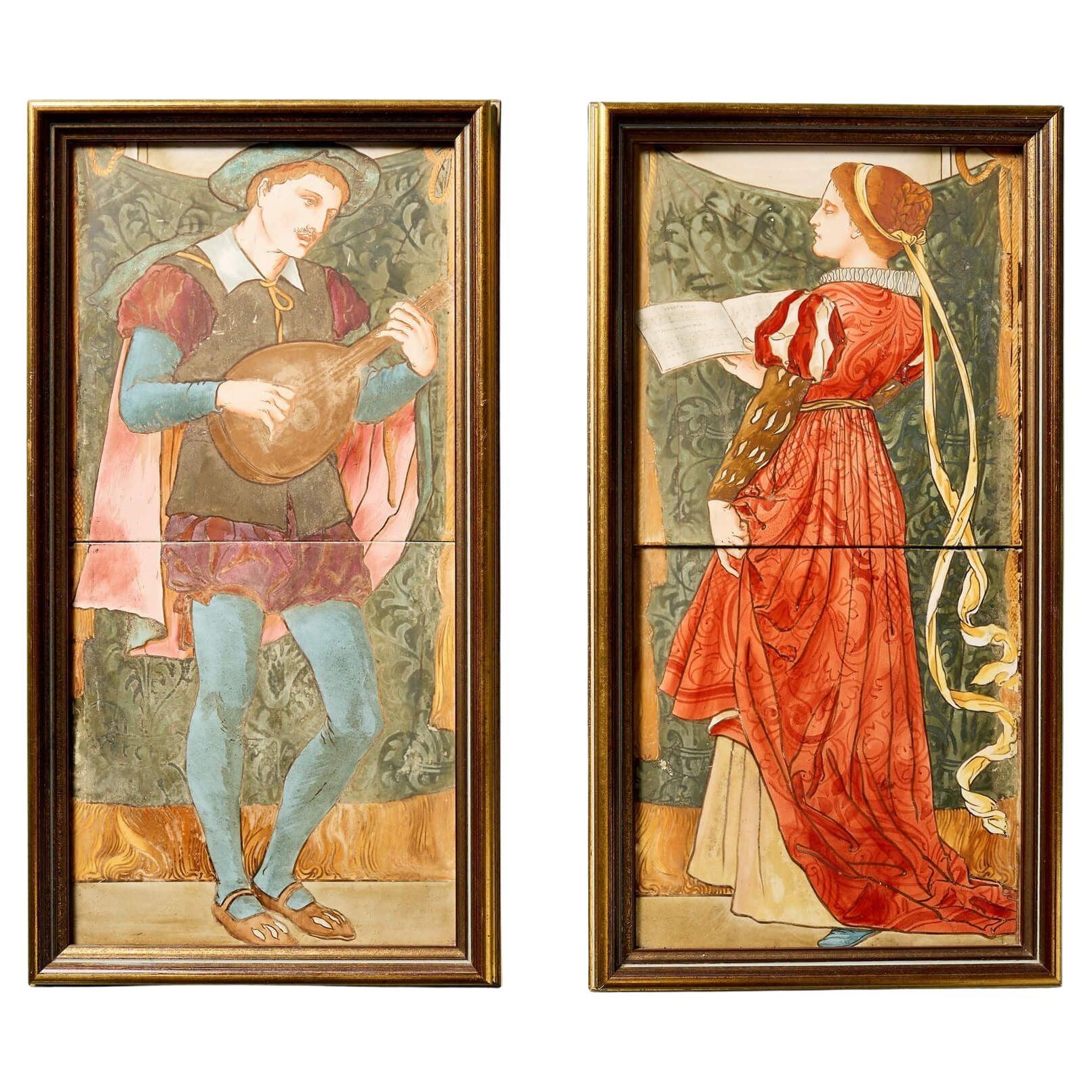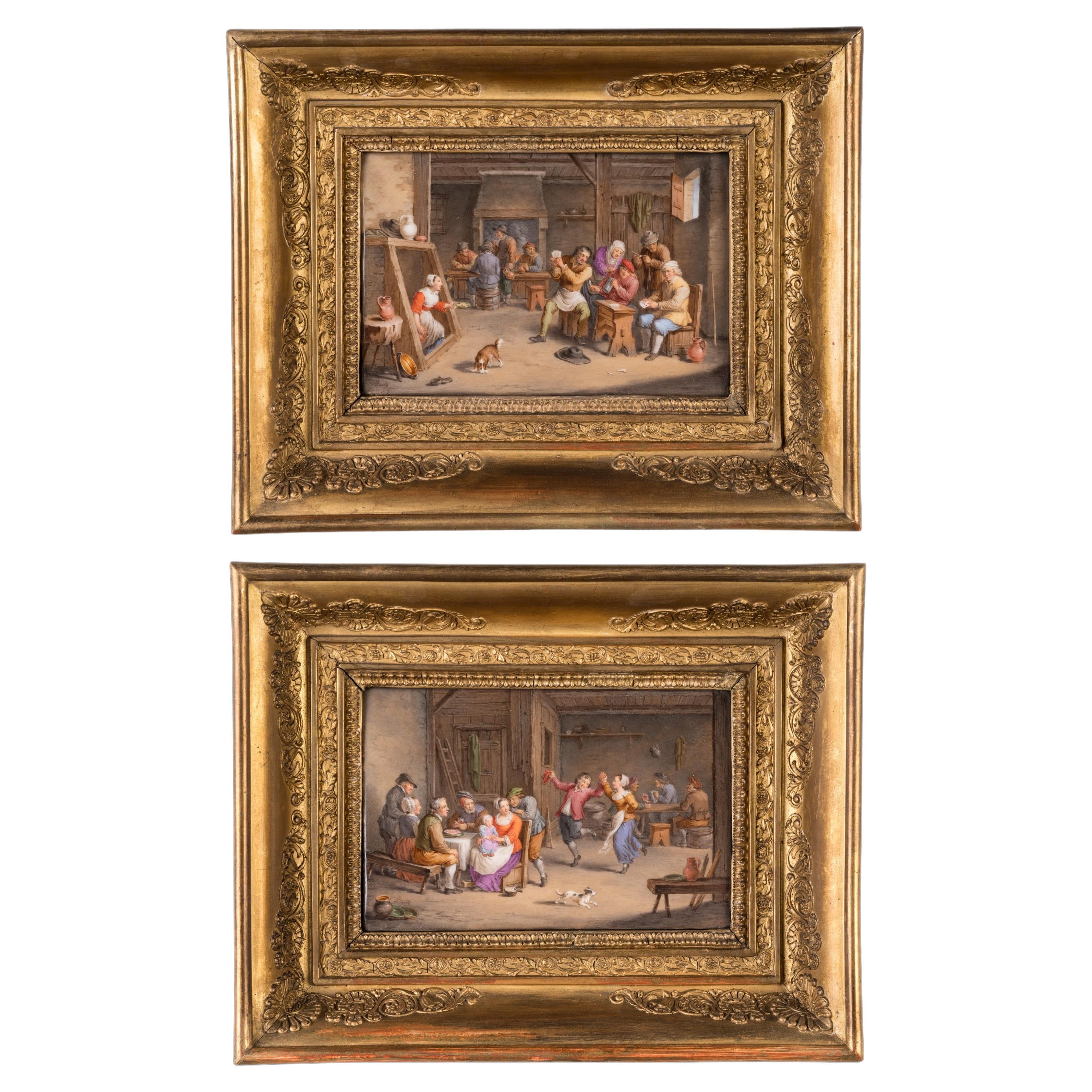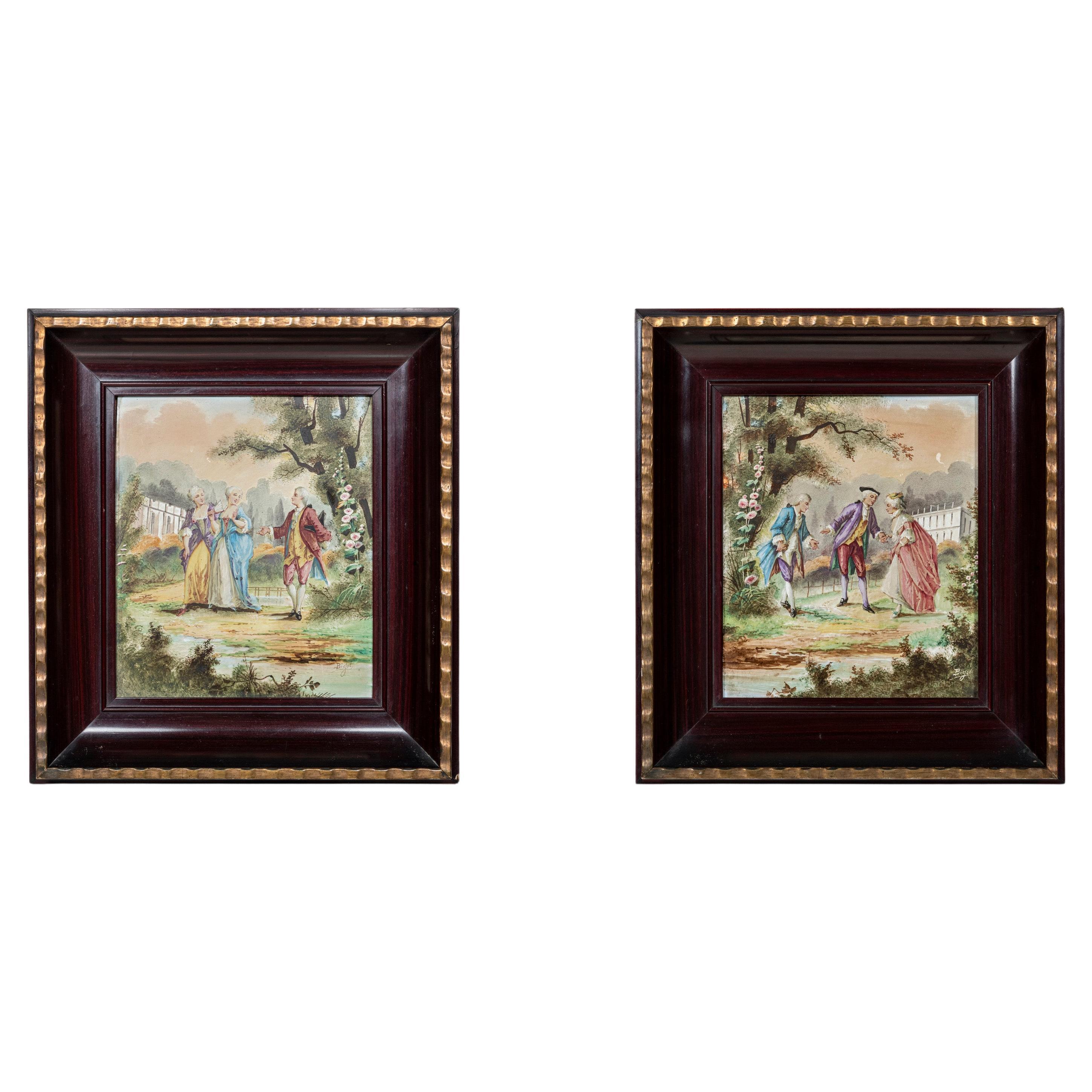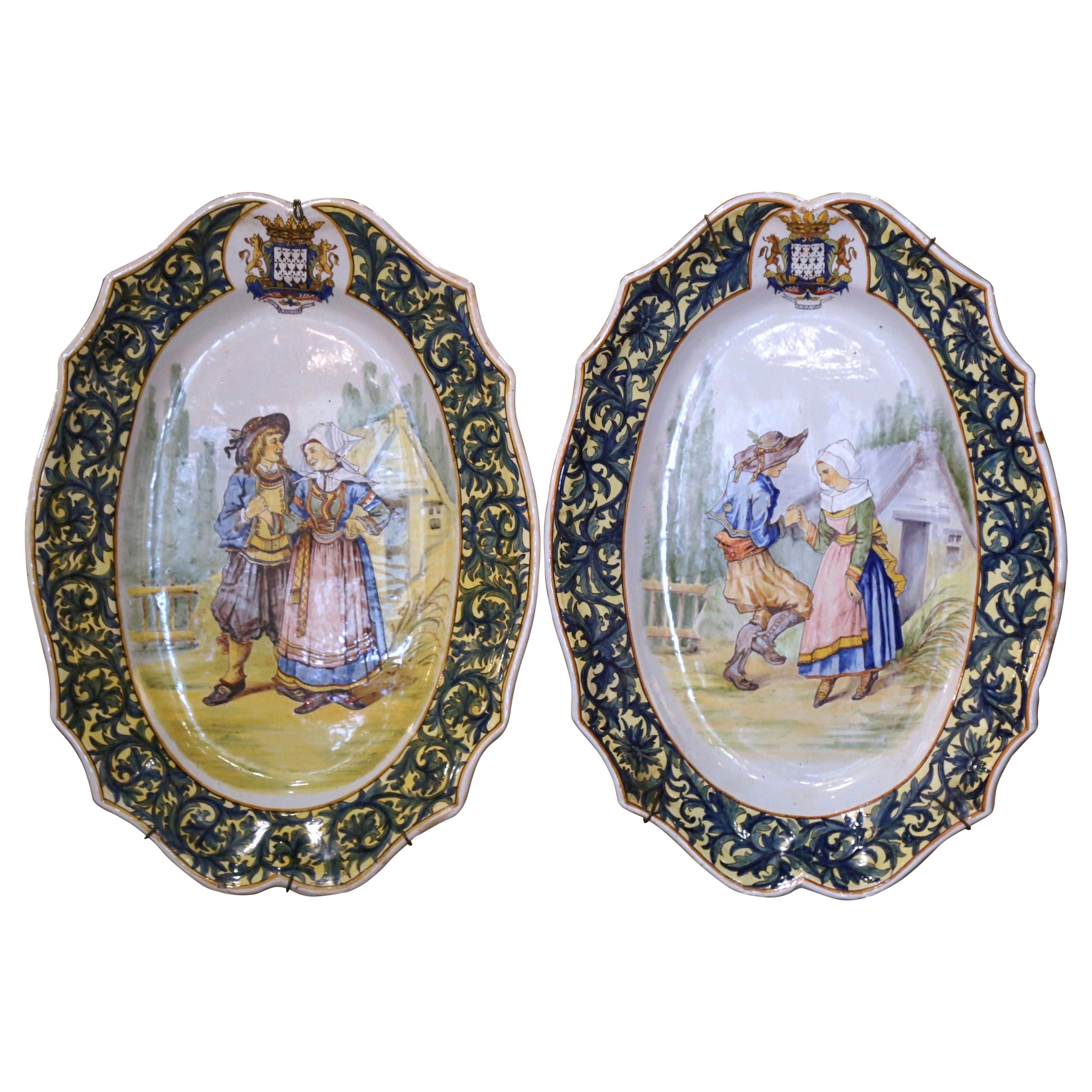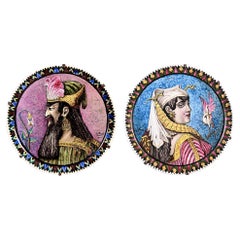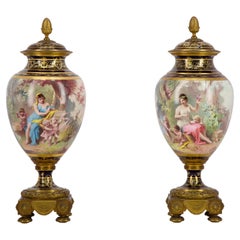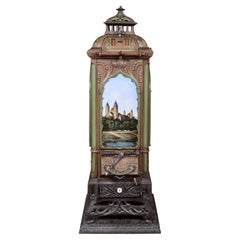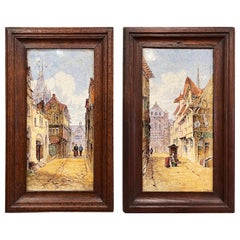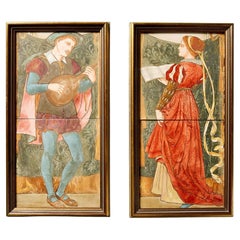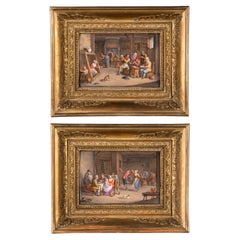Items Similar to FAÏENCERIE DE SARREGUEMINES, Two Ceramic Panels of Parisian Scenes, from 1881
Want more images or videos?
Request additional images or videos from the seller
1 of 15
FAÏENCERIE DE SARREGUEMINES, Two Ceramic Panels of Parisian Scenes, from 1881
$21,227.54
£15,889.35
€18,000
CA$29,215.15
A$32,563.33
CHF 17,084.86
MX$397,651.34
NOK 216,331.49
SEK 204,466.17
DKK 137,028.68
About the Item
The Descent of the Courtille
The first panel depicts the famous Descent of the Courtille, a parade created in 1822 on the occasion of the Paris Carnival. Due to its popularity, it was held annually at least until 1859 and the expansion of Paris. La Courtille was already a well-known place of entertainment, as it was exempt from the wine taxes applied within the boundaries of the Paris Farmers-General wall. The guinguettes that thrived there made it the ideal starting point for this parade, which descended part of what are now rue de Belleville and rue du Faubourg du Temple toward the Canal Saint Martin. Our panel shows the beginning of the event, starting from La Courtille, as indicated by the name of the establishment in the background, likely a guinguette. Joyful characters parade two by two in a rural setting. The woman in the foreground waves her companion’s hat and cane as he carries her on his shoulders—they are making a lot of noise. In contrast, the couple behind them is very close together: they are whispering to each other, seemingly about the pair in the foreground, judging by their sly smiles.
The Descent of the Courtille was the subject of a vaudeville-ballet-pantomime by Théophile Marion Dumersan and Charles Désiré Dupeuty in 1841, for which Richard Wagner composed *Descendons gaiement la Courtille*.
The Flower Girl of Château d’Eau
Our second panel depicts a scene from the work by Paul de Kock (1793–1871), *The Flower Girl of Château d’Eau*, published in 1855. The startled young woman is being harassed by a man with a sneering smile while she was selling her flowers. The crowd, composed of both men and women, reacts in very different ways—some are amused, others frightened or shocked—but no one steps in to help. The scene takes place in Place du Château d’Eau, now known as Place de la République. The square was originally named after the fountain by Pierre-Simon Girard, adorned with four lions, which appears on the panel. Today, the fountain is located in the square named after it, Place de la Fontaine-aux-Lions, in the 19th arrondissement.
Both scenes are framed by a beautiful ochre border with vegetal ornaments and are signed in the lower left corner with the mark “S DVP” and the address “28, rue de Paradis - Paris.” Rue de Paradis was home to many ceramics and crystal manufacturers, such as the Manufactures of Saint-Louis, Choisy-le-Roi, and Baccarat. In this case, it refers to the famous Lorraine fine earthenware manufacturer Sarreguemines, which had a warehouse at number 28. Numerous ceramic panels produced by Sarreguemines adorned buildings between the 19th and 20th centuries. For example, a ceramic panel installed in 1898 on the Villa Louis in Enghien-les-Bains bears the exact same mark.
The mark’s initials indicate an “S” for Sarreguemines, a “D” for Digoin, a “V” for Vitry-le-François, and a “P” most likely for Paris. This tells us that our panels were produced from 1881 onward, the year the factory opened a site in Vitry-le-François in response to the annexation of Lorraine by Germany in 1876, allowing the company to continue trading in France.
Although the Sarreguemines factory was founded in 1790, the arrival of Paul Utzschneider as director in 1799 marked the beginning of its rise to fame. From then on, the factory expanded and diversified its production: fine earthenware, stoneware, and decorative majolica tiles. Majolica became the hallmark of the company, establishing Sarreguemines as one of the most important ceramic centers in Europe. In the realm of grand decoration, Sarreguemines always followed artistic trends and cutting-edge styles.
- Creator:Digoin & Sarreguemines (Artist)
- Dimensions:Height: 53.94 in (137 cm)Width: 35.83 in (91 cm)Depth: 0.4 in (1 cm)
- Style:Belle Époque (Of the Period)
- Materials and Techniques:Ceramic,Enameled
- Place of Origin:
- Period:
- Date of Manufacture:1881
- Condition:
- Seller Location:SAINT-OUEN-SUR-SEINE, FR
- Reference Number:Seller: 157611stDibs: LU7662245016212
About the Seller
No Reviews Yet
Recognized Seller
These prestigious sellers are industry leaders and represent the highest echelon for item quality and design.
1stDibs seller since 2022
Typical response time: 4 hours
- ShippingRetrieving quote...Shipping from: Revin, France
- Return Policy
Authenticity Guarantee
In the unlikely event there’s an issue with an item’s authenticity, contact us within 1 year for a full refund. DetailsMoney-Back Guarantee
If your item is not as described, is damaged in transit, or does not arrive, contact us within 7 days for a full refund. Details24-Hour Cancellation
You have a 24-hour grace period in which to reconsider your purchase, with no questions asked.Vetted Professional Sellers
Our world-class sellers must adhere to strict standards for service and quality, maintaining the integrity of our listings.Price-Match Guarantee
If you find that a seller listed the same item for a lower price elsewhere, we’ll match it.Trusted Global Delivery
Our best-in-class carrier network provides specialized shipping options worldwide, including custom delivery.More From This Seller
View AllBALLEROY & Co., Joseph Albert PONSIN, Pair of Plates Adorned with Portraits
By Balleroy Freres
Located in SAINT-OUEN-SUR-SEINE, FR
This Pair of Ornamental Porcelain Dishes Was Crafted by the Company Balleroy & Cie in Limoges and Decorated by Joseph Albert Ponsin, Likely in 1876
Both dishes bear the mark of the ...
Category
Antique Late 19th Century French Napoleon III Ceramics
Materials
Porcelain
Pair of porcelain vases mounted in gilt bronze, circa 1890
By Manufacture Nationale de Sèvres, Charles Labarre
Located in SAINT-OUEN-SUR-SEINE, FR
This very beautiful pair of ovoid and covered vases was made of Sèvres porcelaine and mounted in gilt bronze. The two vases depicts a painted decor b...
Category
Antique 19th Century French Napoleon III Vases
Materials
Bronze
Pair of Sèvres porcelain vases mounted in gilt bronze painted by J. Machereau
By Manufacture Nationale de Sèvres, Charles Labarre
Located in SAINT-OUEN-SUR-SEINE, FR
This beautiful pair of covered vases made of porcelain originally comes from the Manufacture of Sèvres where the white pieces were bought in 1869, decorated then mounted in gilt bron...
Category
Antique 19th Century French Napoleon III Vases
Materials
Bronze
Musgrave & Co Mannheim, Enameled Cast Iron Stove Adorned
Located in SAINT-OUEN-SUR-SEINE, FR
This original Art Nouveau style enameled cast iron stove is a German work of the company Musgrave & Co dating from the beginning of the 20th century.
...
Category
Early 20th Century German Art Nouveau Fireplaces and Mantels
Materials
Enamel, Iron
Art Nouveau Ceramic Fireplace with Sunflowers – MANUFACTURE DE VITRY-LE-FRANÇOIS
Located in SAINT-OUEN-SUR-SEINE, FR
A rare polychrome glazed ceramic fireplace crafted by the MANUFACTURE DE VITRY-LE-FRANÇOIS, circa 1900. This striking Art Nouveau piece features a richly detailed relief decoration o...
Category
Antique 1880s French Art Nouveau Fireplaces and Mantels
Materials
Ceramic
Théophile SOYER, Renaissance-Style Ornamental Dish
By Théophile Soyer
Located in SAINT-OUEN-SUR-SEINE, FR
This enamelled ornamental dish with neo-Renaissance decoration was made by Théophile Soyer in 1880.
The son of enameller Paul Soyer, Théophile Soyer attended the École des Beaux-Ar...
Category
Antique 1880s French Renaissance Revival Ceramics
Materials
Ceramic
You May Also Like
A Fine Pair Of Sevres Style Painted Porcelain Plaques Signed H. Desprez
Located in London, GB
A pair of Sevres style painted porcelain plaques, depicting male and female in town scene, in elaborate gilt frames, signed H. Desprez 20th century school.
Dimensions: Frame: H: 31...
Category
20th Century European Paintings
Materials
Porcelain
Pair of 19th Century English Minton Framed Painted Ceramic Wall Plaques
By Minton
Located in Dallas, TX
Crafted in England circa 1880, and set in the original carved oak frames, each plaque is hand painted and stamped on the back Minton, London, England. Each porcelain, signed by the a...
Category
Antique Late 19th Century English Paintings
Materials
Ceramic, Oak
Pair of Antique Copeland Framed Tiles of Classical Scenes
By Copeland
Located in Wormelow, Herefordshire
A striking pair of antique Copeland tiles depicting classical scenes, displayed in beautiful gilt frames.
Expertly hand painted, these ceramic 8 inch tiles showcase a male musician ...
Category
Antique Late 19th Century English Victorian Decorative Art
Materials
Ceramic
Pair of 19th Century 'Teniers Style' Porcelain Plaques by Feuillet of Paris
By Jean-Pierre Feuillet
Located in London, GB
A Fine Pair of Framed Porcelain Plaques
Of Tavern Scenes By Jean-Pierre Feuillet
The hand-painted, glazed & fired pair of rectangular plaques of tavern genre scenes in the manner of...
Category
Antique 19th Century French Baroque Decorative Art
Materials
Porcelain, Giltwood
Pair of painted porcelain plaques signed Bigot, France, late 19th century.
Located in Buenos Aires, Buenos Aires
Pair of painted porcelain plaques signed Bigot, France, late 19th century.
Dimensions with frame: 46 cm height, 41 cm width, 6 cm depth.
Category
Antique Late 19th Century French Napoleon III Decorative Art
Materials
Porcelain, Wood
Pair 19th Century French Painted Faience Porquier Beau Quimper Wall Platters
By Grande Maison HB Quimper
Located in Dallas, TX
Decorate a kitchen wall or a shelf with this important pair of antique platters. Created by Porquier Beau in Quimper, France circa 1895, the large hand-p...
Category
Antique Late 19th Century French Delft and Faience
Materials
Faience
More Ways To Browse
Les Pierre Antiques
V Trend
Majolica Tiles
S Wagner
19th Century Mens Hats
Antique German Stoneware
Antique Majolica Tiles
Antique German Tile
Le Chateau Antiques
Lion Wall Fountain
Rue De Paradis
P Girard
La Courtille
Antique Wood India Cabinet
Blue Cobalt Glass Dish
Blue Porcelain Mantel Clock
Brass Cellarette
Brass Wall Tray
